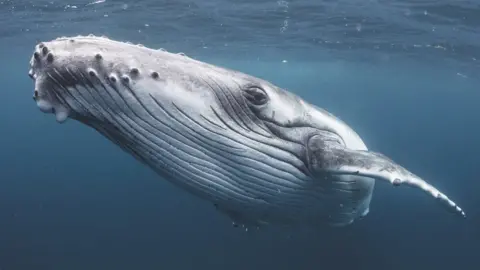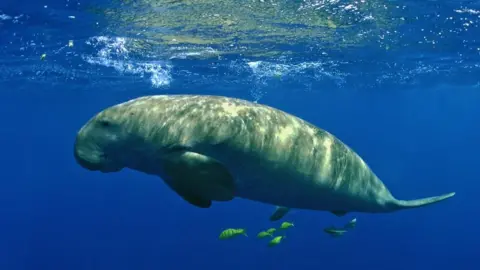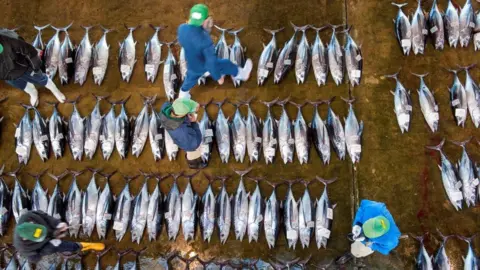What is the UN High Seas Treaty and why is it needed?
 Getty Images
Getty ImagesAfter more than a decade of negotiations, United Nations member countries have agreed the first ever treaty to protect the world's oceans that lie outside national boundaries.
Environmental groups say the UN High Seas Treaty will help reverse biodiversity losses and ensure sustainable development, but caution there is still a long way to go before implementation.
What are the high seas?
Two-thirds of the world's oceans are currently considered international waters.
That means all countries have a right to fish, ship and do research there.
But until now only about 1% of these waters - known as "high seas" - have been protected.
This leaves the marine life living in the vast majority of the high seas at risk of exploitation from threats including climate change, overfishing and shipping traffic.
Which marine species are at risk?
In the latest assessment of marine species, nearly 10% were found to be at risk of extinction, according to the International Union for Conservation of Nature (IUCN).
According to Dr Ngozi Oguguah, from the Nigerian Institute For Oceanography. the biggest causes of extinction are overfishing and pollution.
Sharks, whales and abalone species - a type of shellfish - have come under particular pressure because of their high value as seafood and for drugs.
 Patrick Louisy
Patrick LouisyThe IUCN estimates that 41% of the threatened species are also affected by climate change.
Minna Epps, head of IUCN's ocean team, said: "Carbon dioxide is actually being absorbed by the ocean. That makes the ocean much more acidic, which means that it's going jeopardise certain species."
Climate change has also increased marine heat waves 20-fold, according to research published in the magazine Science. This can lead to extreme events like cyclones but also mass mortality events.

How will the High Seas Treaty protect marine life?
The key measure is put the world's international waters into protected areas (MPAs) - which will help achieve the global goal of protecting 30% of the world's oceans by 2030, which was agreed at the 2022 UN biodiversity conference.
Activity can occur in these areas but only "provided it is consistent with the conservation objectives" - meaning it doesn't damage marine life.
This could mean limiting fishing activities, shipping routes and exploration activities like deep-sea mining.
Environmental groups are seriously concerned about the possible effects of mining, such as disturbing sediments, creating noise pollution and damaging breeding grounds.
Countries will propose areas to be protected, and these will then be voted on by the countries that sign up to the treaty.
What else is in the treaty?
The treaty's other important points are:
- arrangements for sharing marine genetic resources; and
- requirements for environmental impact assessments (EIA) for deep sea activities like mining
Marine genetic resources means biological material from plants and animals in the ocean. These can have benefits for society, such as pharmaceuticals and food.
Countries have agreed to share "fairly and equitably" any discoveries made in the deep sea between countries. This was important for poorer nations who argued they may not have the resources to undertake this work independently.
However, Dr Robert Blasiak, from Stockholm University, said no one knows how much ocean resources are worth and therefore how they could be split.
Countries will also be asked to assess the environmental impact of activities in the oceans if the impacts are not well known or could cause harm to marine life.
Critics point out that countries will conduct their own EIAs and make the final decision - although other countries can register concerns with the monitoring bodies.
 Getty Images
Getty ImagesRicher nations have also pledged new money for the delivery of the treaty.
The EU recently announced nearly 820m euros (£722.3m) for international ocean protection.
When will the treaty take effect?
Countries will need to meet again to formally adopt the agreement and then have plenty of work to do before the treaty can be implemented.
It will only enter"into force" once 60 countries have signed up and legally passed the legislation in their own countries.
Signatory countries will then gave to then start looking at practically how these measures can be implemented and managed.
